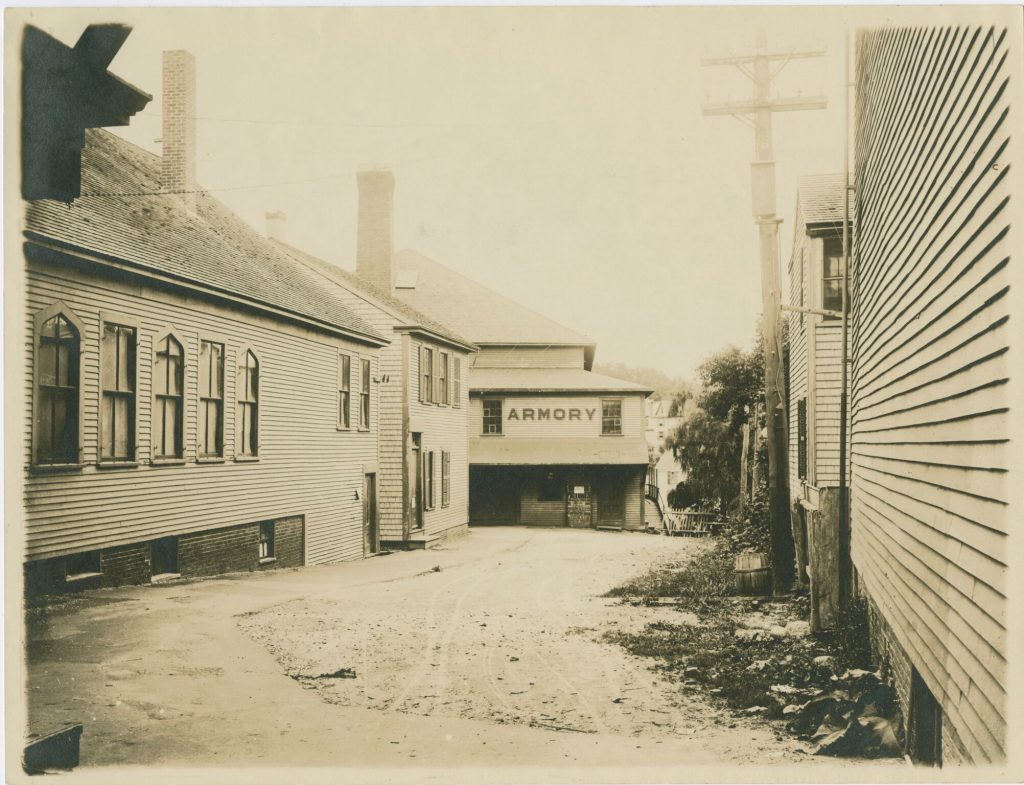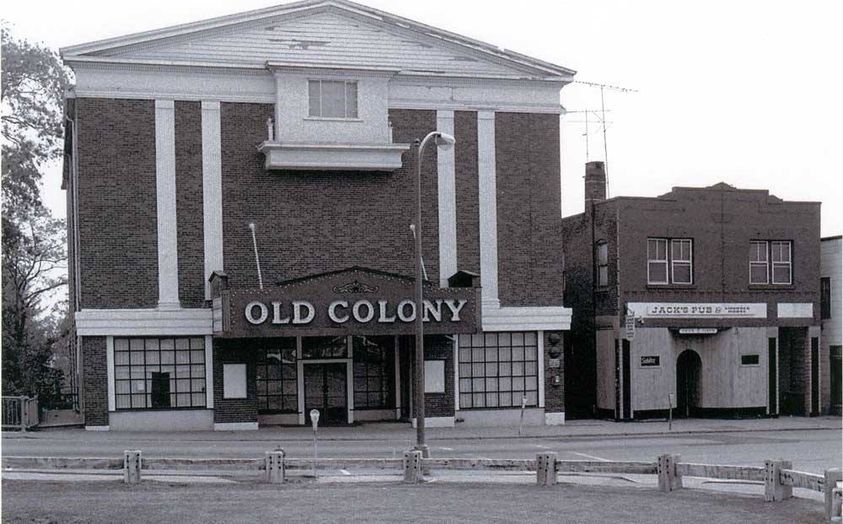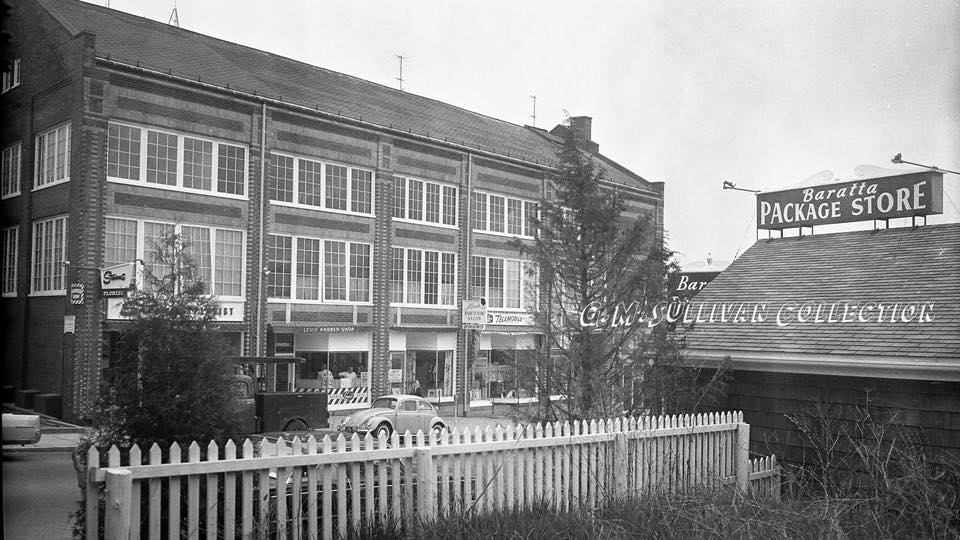My architectural office is at 34 Main St., on the second floor above the former Plymouth Savings/Eastern Bank building. Although the location is amazing, clients often have a hard time finding us.
Google Maps often sends folks to 34 Main Street Extension (The Landmark Building, formerly the Old Colony Theater). Conversely, people in search of 34 Main Street Extension arrive almost daily at my place. Packages earmarked for my office get delivered to Main Street Extension. More than one delivery man has huffed and puffed up our stairs only to find they are at the wrong address. It has gotten to the point that we have a sign in our lobby warning folks that if the business they are seeking is not listed on the directory they should head to Main Street Extension.
The confusion stems from street layouts dating back to the Pilgrims. Leyden Street was Plymouth’s first street. It originally ran from the edge of the harbor to the first fort, high atop Burial Hill. From Leyden Street, two cross streets emerged. What would become Main Street left from Leyden Street and headed north. A second street, now known as Market, headed south down a hill to Town Brook.

This is where the debacle with Main Street Extension began. Main Street and Market Street were never aligned across from each other. Market Street was originally aligned a bit further west than Main Street. In addition, when town officials began the process of giving Plymouth residents house numbers, the three-way intersection of Leyden, Main, and Market became Plymouth’s zero point.
A zero point is often the basis of a house numbering system. In Plymouth, if a street is located north of Leyden and runs north, address numbers will be even on the west side, odd on the east side. If the street is south of Leyden and heads south, even numbers are on the east side, odd numbers on the west side. The same is true for streets running east to west. If the street is east of Main Street, odd numbers are on the north side, even on the south. Conversely, if the street runs west away from Main Street, odd numbers are on the north side, even on the south side. (Phew! Make sense? For the directionally challenged, east is towards the ocean, south is towards the Cape Cod Canal, west is towards Carver, and north is towards Kingston.)
But let’s return to Main Street Extension. In the early 1900s it was thought that Main Street should extend straight through the intersection and avoid the turnaround Market Street. The decision to proceed required the taking of several buildings by eminent domain and the construction of a bridge over Town Brook.
Construction of the Main Street Extension bridge began in 1910 and was completed by 1912. Meantime, the demolition of several buildings began. They included the offices of the Old Colony Memorial (Plymouth’s newspaper), the original John E. Jordan Hardware building, and the armory. The removal of these buildings created land for two signature buildings on the new Main Street Extension. The new addresses also followed the zero-point numbering system, as they were on the opposite side of Leyden Street. Buildings erected on the east side of the street were assigned even numbers; those on the west were given odd numbers. Thus began the confusion between Main Street and Main Street Extension.

Today, 34 Main Street Extension is home the Landmark building. It was originally built as The Old Colony Theater. Constructed in 1914-1915 by barber Charles Moning, the theater had 720 seats and showed movies until 1972. Generations of locals saw their first movie in this theater (me included), with some folks seeing the world premiere of “Plymouth Adventure” in 1952. Despite being a hit, the movie was a financial flop due to high production costs.
As for the theater, maintenance of the building was becoming prohibitively expensive just as a new twin theater was opening at Myles Standish Plaza (Stop and Shop) that proved a death knell. Sold to another investor, the theater hosted live performances until the 1980s, when it was sold again to a new owner who began the radical transformation into a four-story office building.
On the other end of the bridge, on the same side of the street as the Old Colony Theater site, is the Emond Building, which was constructed in 1914 by Arthur Emond Sr. He originally hailed from Quebec, settled in Fall River and eventually resided in Kingston. Emond came to own land in several South Shore communities, acquiring a number of newly opened lots on Main Street Extension.
His building was put to a variety of uses. In the basement, a 594-seat theater was constructed, operating from 1917 to 1934 until it was leased by the owners of the rival Old Colony Theater, who promptly closed it for good. On the first floor, a variety of commercial spaces were created as well as one apartment located at the southern end of the building. The second floor housed the Emond family along with other apartments, while the third floor contained a ballroom and gymnasium.
The Emond Building was one of my favorite downtown buildings. The street facade was filled with windows that ran from floor to ceiling and had an intricate pattern of brickwork. In 1986, the building was sold and completely remodeled, erasing its past. Thankfully, glimpses of the original building can still be seen in the gable ends.
Curiously enough, the Emond Building address is 8-18 Main Street Extension. Prior to moving my office to 34 Main St., my office was 16-18 Main St. (now Kiskadee Coffee). I faced the same issues of lost packages and clients when my office was at 16 Main St.
I vow if I ever move my office again – and if I stay on Main Street – it’s going to have to be at an address with a number above 46. But then again, the highest number on Main Street is 64. This doesn’t give me much choice.
Architect Bill Fornaciari is a lifelong resident of Plymouth (except for a three-year adventure out west as a young man) and is the owner of BF Architects in Plymouth. His firm specializes in residential work and historic preservation. Have a question or idea for this column? Email Bill at billfornaciari@gmail.com

